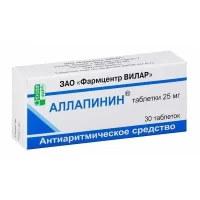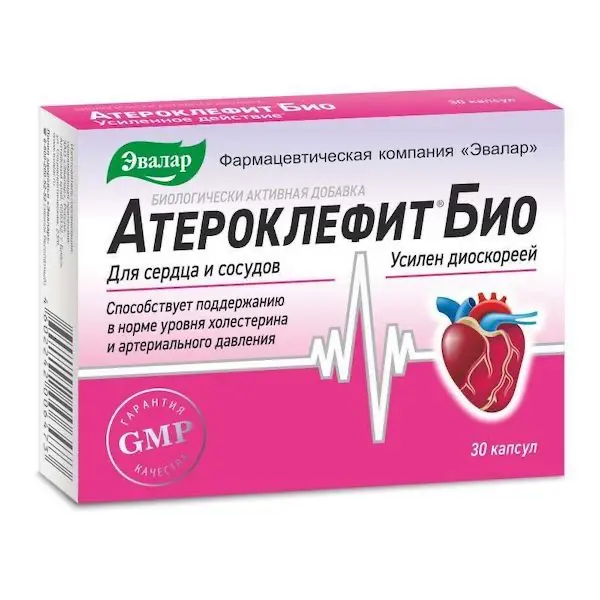Description
Hydrochlorthiazide Pharmacodynamics
The mechanism of action of thiazide diuretics (thiazides) is not fully understood. Thiazides block reabsorption of sodium and chlorine ions at the beginning of the renal tubules. Thus, they increase the excretion of sodium and chlorine and thus the excretion of water from the body.
As a result of diuretic action of hydrochlorothiazide, the volume of circulating fluid decreases, resulting in increased renin activity and plasma aldosgerone content. This leads to increased urinary excretion of potassium ions and decreased blood potassium content (hypokalemia). Hydrochlorothiazide also increases magnesium ion excretion and decreases calcium ion excretion in the urine. Thiazide diuretics decrease renal excretion of uric acid and increase its content in blood.
Thiazide diuretics also reduce carboenhydrase activity by enhancing the excretion of bicarbonate ions. But this effect is usually weak and has no effect on urine pH.
At maximum therapeutic doses, the diuretic/natriuretic effect of all thiazide diuretics is approximately the same. Natriuresis and diuresis occur within 2 hours and reach their maximum after about 4 hours. The duration of diuretic action of hydrochlorothiazide is 6 to 12 hours.
Hydrochlorothiazide has an antihypertensive effect. Normal blood pressure is not affected by thiazide diuretics.
Indications
– Arterial hypertension (used both in monotherapy and in combination with other hypotensive agents).
– Edema syndrome of various genesis (chronic heart failure, nephrotic syndrome, premenstrual syndrome, acute glomerulonephritis, chronic renal failure, portal hypertension, corticosteroid treatment).
– Reduction of symptomatic polyuria in nephrogenic nonsanguineous diabetes.
– Prevention of formation of calcium-phosphate concrements in the urinary tract in hypercalciuria.
Contraindications .
– Hypersensitivity to hydrochlorothiazide, other sulfonamide derivatives or any of the excipients.
– Anuria.
– Severe renal insufficiency (creatinine clearance less than 30 ml/min).
– Severe hepatic insufficiency or hepatic encephalopathy (risk of hepatic coma).
– Diabetes mellitus that is difficult to control.
– Refractory hyiokalemia, hyponatremia, hypercalcemia.
– Insufficiency of the adrenal cortex (including Addison’s disease).
– Pregnancy (I trimester) and breastfeeding.
– Childhood under 3 years of age (solid dosage form).
– Rare hereditary intolerance to galactose, lactase deficiency, glucose-galactose malabsorption syndrome (the drug contains lactose monohydrate).
Caution
– Impaired renal function.
– Mild to moderate hepatic dysfunction, progressive liver disease.
– Hypokalemia.
– Hyponatremia.
– Hypercalcemia.
– Increase of QT interval duration on ECG.
– Concomitant use of drugs that can cause polymorphic ventricular tachycardia of “pirouette” type or increase the QT interval duration on ECG.
– Concomitant use of lithium drugs, drugs that can cause hypokalemia, cardiac gl and kozi do c.
– Allergic reactions to penicillin in history.
– Hyperparathyroidism.
– Diabetes mellitus.
– Hyperuricemia, gout.
– Systemic lupus erythematosus.
– Coronary heart disease, expressed atherosclerosis of coronary or cerebral arteries.
– Chronic cardiac insufficiency.
– Elderly age.
– Pregnancy (second and third trimester).
– Childhood (from 3 to 18 years).
Usage during pregnancy and breast-feeding.
Pregnancy
There is limited experience with hydrochlorothiazide during pregnancy (especially in the first trimester). Preclinical data regarding safety are insufficient.
Hydrochlorothiazide penetrates the placental barrier and is detected in umbilical cord blood. Given the mechanism of pharmacological action of hydrochlorothiazide, its use in the second and third trimesters of pregnancy may disrupt the feto-placental perfusion and lead to the development in the fetus and the newborn of such complications as jaundice, electrolyte-water balance disorders and thrombocytopenia. Cases of thrombocytopenia have been described in infants whose mothers received thiazide diuretics.
The use of hydrochlorothiazide in the first trimester of pregnancy is contraindicated. In the second and third trimesters of pregnancy hydrochlorothiazide may be used only in case of absolute necessity, when the benefit to the mother exceeds the potential risk to the fetus and/or child.
Hydrochlorothiazide should not be used for the treatment of gestosis in the second half of pregnancy (edema, arterial hypertension or preeclampsia), as it increases the risk of decreased circulating blood volume and placental hypoperfusion, but does not have a beneficial effect on the course of the mentioned complications of pregnancy. Diuretics do not prevent the development of gestosis.
Breast-feeding period
Hydrochlorothiazide penetrates the mother’s milk, and therefore its use during breastfeeding is contraindicated. If use of hydrochlorothiazide during lactation is absolutely necessary, breastfeeding should be stopped.
How to use and dosages.
- Inside. Tablets should be taken after a meal.
- Dosage of hydrochlorothiazide should be chosen individually. It is recommended to take the drug in the minimum effective dose.
- If it is necessary to use hydrochlorothiazide at a single dose of 12.5 mg, preparations of other manufacturers in a dosage form of “25 mg tablets” with a rib should be prescribed to ensure the indicated dosage regimen.
- Adults
- Arterial hypertension.
The usual starting dose of hydrochlorothiazide is 25-50 mg once daily, as monotherapy or in combination with other hypotensive agents. In some patients the antihypertensive effect is achieved when using hydrochlorothiazide at a starting dose of 12.5 mg once daily (both as monotherapy and in combination with other medicinal agents). - It is necessary to use the maximum effective dose of the drug. The maximum daily dose of hydrochlorothiazide for treatment of arterial hypertension is 100 mg per day.
- If hydrochlorothiazide is used in combination with other hypotensive drugs, it may be necessary to reduce the dose of the other drug in order to prevent excessive reduction of blood pressure (BP).
- The antihypertensive effect of hydrochlorothiazide is manifested within 3-4 days, however, it may take up to 3-4 weeks to achieve optimal effect. After the end of treatment, the antihypertensive effect persists for one week.
- Oedema syndrome of various heiasis
- The usual starting dose of hydrochlorothiazide in the treatment of edema of different genesis is 25-100 mg once daily. Some patients respond to hydrochlorothiazide every other day or once every 3-5 days. Depending on clinical response, the dose of the drug may be reduced to 25-50 mg once daily or once every 2-5 days. In some cases at the beginning of treatment it may be necessary to take hydrochlorothiazide in maximum (for this indication) dose of 200 mg per day.
- In premenstrual syndrome, the usual dose is 25 mg per day and is used from the onset of symptoms until the onset of menstruation. Reduction of symptomatic polyurine in iephrogeinemic nonspecific diabetes
- The recommended daily dose of hydrochlorothiazide is 50-150 mg per day (in several doses).
- Prevention of formation of calcium-phosphate concrements in the urinary tract in hypercalciuria
The use of hydrochlorothiazide is indicated for calcuria greater than 8 mmol/day. The recommended initial dose of hydrochlorothiazide is 25 mg once daily. Thereafter, an increase to the maximum (for this indication for use) dose of 50 mg per day is indicated. - Children
- Doses are adjusted according to the body weight of the child. Children over 3 years of age take 1-2 mg/kg/day or 30-60 mg/bedroom 1 time per day. The total daily dose for children aged 3-12 years is 37.5-100 mg (maximum daily dose for children is 100 mg per day). After 3-5 days of treatment it is recommended to take a break for 3-5 days. As maintenance therapy, the above dose is prescribed 2 times a week. When using an intermittent course of treatment with intake after 1-3 days or during 2-3 days with a subsequent break, the decrease in efficacy is less pronounced and side effects develop less frequently.





